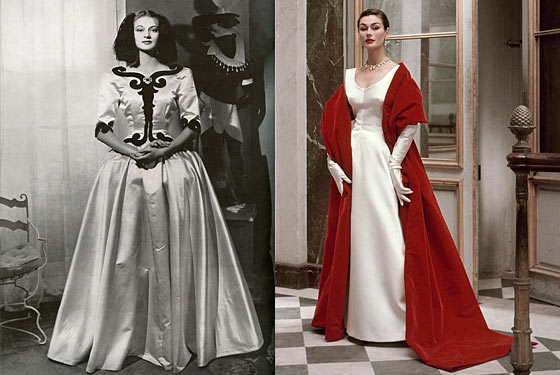For the second time this week, I decided to visit the Balenciaga exhibit at the DeYoung. I've seen it twice before, but this time, I brought a "SME" otherwise known as a "Subject Matter Expert" aka my friend/former instructor Bob. One of my favorite classes in school was Bob's couture embroidery class. The instructor, Bob Haven, teaches in the theater costume design dept. at the University of Kentucky during the school year and then at my alma mater during the summers. Much as I LOVE to visit any fashion related exhibit at any museum near me, it's more fun to visit with someone who understands the language!
Bob, doesn't think it's at all strange that I have to crawl around behind the cases to see things from the back, or lean in waaaaaaayyyyyyyy too close so I can see what kinds of sequins or beads were used in the embroidery or how something was seamed together. That's what museums are for! Right? Since taking pictures is forbidden and we're no longer allowed to sketch in the DeYoung, I try to memorize construction techniques and embroidery ideas for inspiration in my own work.
This was a gorgeous flamenco inspired dress that is crazy complicated to construct. The lace is overlayed onto a very structured corseted underdress. The lace has multiple invisible darts that allowed it to be manipulated so that the scalloped edge of the lace could be curved and flared to lay perfectly on top of the swirling poufed hem which is then held up and out by some type of a hoop structure underneath. Hmmmm, someday I'm going to have to try this.

There were plenty of garments that I didn't like that much (one velvet gown had hundreds of tiny ermine tails attached to its bustle, poor little ermines) but overall, if you're a fashion lover, you should try to catch this exhibit if it comes to a museum near you. If you're a fashion student, this should be required studying ; )
I bought yet another book for my already overflowing library, so I can go back and reference the stuff I couldn't memorize.
Bob, doesn't think it's at all strange that I have to crawl around behind the cases to see things from the back, or lean in waaaaaaayyyyyyyy too close so I can see what kinds of sequins or beads were used in the embroidery or how something was seamed together. That's what museums are for! Right? Since taking pictures is forbidden and we're no longer allowed to sketch in the DeYoung, I try to memorize construction techniques and embroidery ideas for inspiration in my own work.
 |
| Lisa Fonssagrives photographed by Irving Penn, winter 1950. This coat is included in the exhibit and is the epitome of 50's glamour to me. |
 |
| On the left is the "Infanta Dress" which was inspired by a Diego Velasquez painting in the Louvre. The dress on exhibit at the DeYoung, is an unfinished version of this dress. You can see the basting stitches that are holding the black velvet applique onto the dress. On the right looks like a simple white gown but the seams on it were actually quite complicated in order to show the fabric at it's best. |
This was a gorgeous flamenco inspired dress that is crazy complicated to construct. The lace is overlayed onto a very structured corseted underdress. The lace has multiple invisible darts that allowed it to be manipulated so that the scalloped edge of the lace could be curved and flared to lay perfectly on top of the swirling poufed hem which is then held up and out by some type of a hoop structure underneath. Hmmmm, someday I'm going to have to try this.

There were plenty of garments that I didn't like that much (one velvet gown had hundreds of tiny ermine tails attached to its bustle, poor little ermines) but overall, if you're a fashion lover, you should try to catch this exhibit if it comes to a museum near you. If you're a fashion student, this should be required studying ; )
I bought yet another book for my already overflowing library, so I can go back and reference the stuff I couldn't memorize.

No comments:
Post a Comment